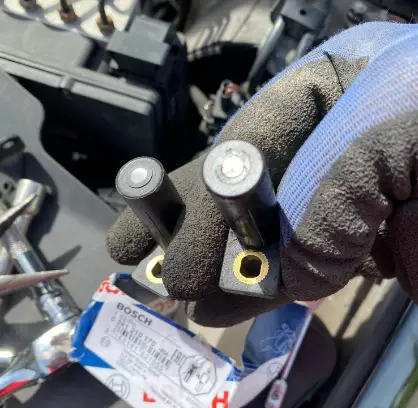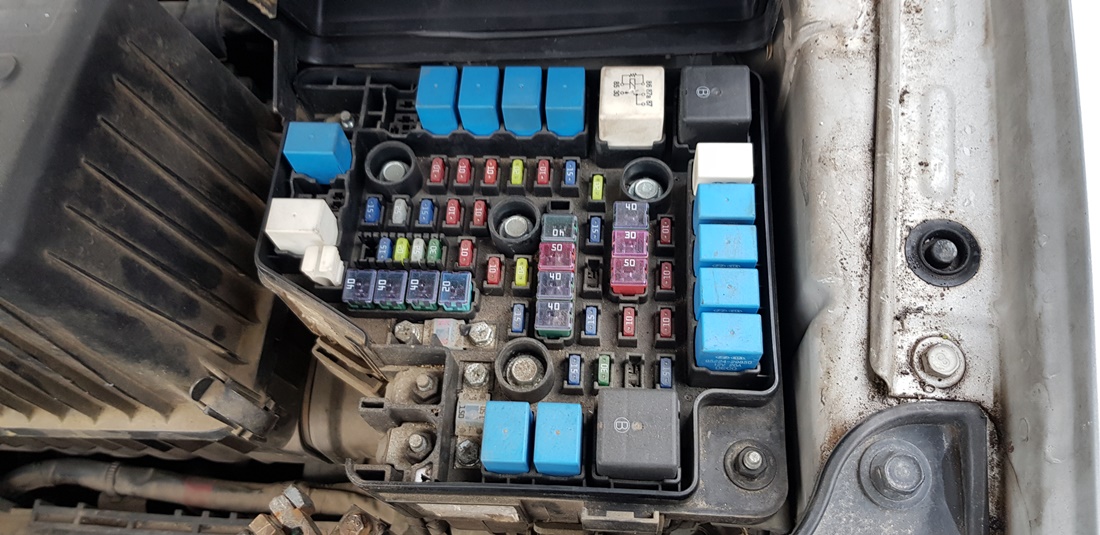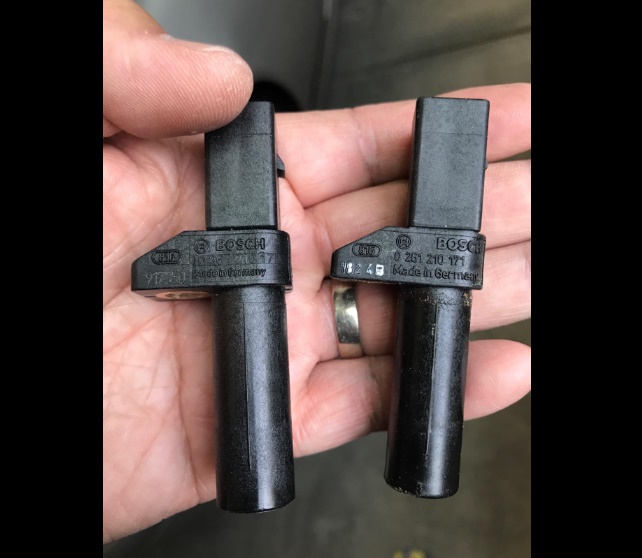P0300 is a diagnostic trouble code that stands for Random/Multiple Cylinder Misfire Detected. It means that the vehicle’s computer has detected that one or more cylinders in the engine are not firing the air/fuel mixture properly which leads to misfiring.
In this article, I will be talking about P0300, its symptoms, how to fix it, and how much it costs to fix the problem.
- What Does The P0300 Trouble Code Mean?
- Which Models Are Affected By The P0300 Trouble Code
- What Are The Possible Causes of The P0300 Trouble Code?
- What Are The Common Symptoms of The P0300 Trouble Code?
- Is It Safe To Drive With a P0300 Trouble Code
- How To Diagnose The P0300 Trouble Code
- How Much Does It Cost To Repair P0300 Trouble Code
- What Repairs Can Fix The P0300 Trouble Code
- How To Fix The P0300 Trouble Code
- In Conclusion
What Does The P0300 Trouble Code Mean?

The P0300 trouble code means that one or more cylinders in the engine are misfiring. A misfire occurs when the spark plug in a particular cylinder is unable to properly ignite the air/fuel mixture while the engine is counting on it for power. This leads to an increase or decrease in the RPMs by more than 2 percent and the vehicle’s computer detects the change and alerts the driver by triggering the check engine light and P0300.
Most vehicles have four to six cylinders (V4 and V6), while some have eight (V8). This means that the engine has four, six, or eight separate combustion chambers. Each cylinder has a spark plug that fires the air/fuel mixture when the powertrain control module orders it to do so. If a spark plug is commanded to ignite the air/fuel mixture in a certain cylinder and it fails to do so that cylinder misfires. The powertrain control module detects this issue and triggers the P0300 code.
(See also: P0300 OBD-II Random/Multiple Cylinder Misfire Detected Trouble Code )
Which Models Are Affected By The P0300 Trouble Code
| Make | Affected By P0300 Code |
|---|---|
| Toyota | Yes |
| Nissan | Yes |
| Chevrolet | Yes |
| BMW | Yes |
| Audi | Yes |
| Buick | Yes |
| Mercedes | Yes |
| GMC | Yes |
| Suzuki | Yes |
| Tata | Yes |
| Lexus | Yes |
| Mazda | Yes |
| Mitsubishi | Yes |
| Kia | Yes |
| Jeep | Yes |
| Fiat | Yes |
| Honda | Yes |
| Hyundai | Yes |
| Opel | Yes |
| Ford | Yes |
| Fiat | Yes |
| Peugeot | Yes |
What Are The Possible Causes of The P0300 Trouble Code?
The P0300 trouble code is caused when one or more cylinders are misfiring. Meaning, the spark plugs in one or more cylinders were unable to ignite the air/fuel mixture which lead to a misfire. The misfire causes an increase or decrease in the RPMs which is caught by the powertrain control module and a P0300 trouble code is triggered.
Possible causes of the P0300 trouble code include:
- Worn-out spark plugs that are unable to ignite properly
- Damaged spark plug wires and coils
- Worn-out distributor cap (applicable to certain vehicles only)
- Damaged rotor button (applicable to certain vehicles only)
- Clogged or defective fuel injectors
- Clogged EGR valve
- Incorrect ignition timing
- Vacuum leak (air leak)
- Low fuel pressure
- Leaking head gasket
- Faulty camshaft sensor
- Faulty crankshaft sensor
- Faulty MAF sensor (mass airflow sensor)
- Faulty oxygen sensor
- A faulty throttle position sensor
- Faulty catalytic sensor
- Faulty powertrain control module (very rare but still possible)
What Are The Common Symptoms of The P0300 Trouble Code?
Common symptoms of the P0300 trouble code include:
- Illuminated or flashing check engine light (flashing check engine light suggests a more serious problem)
- Hard starting
- Engine stalling at stop
- Rough idle
- Hesitation when accelerating
- Increased fuel consumption
- A smell of unburnt fuel
- Black smoke from the tailpipe (unburnt fuel)
Is It Safe To Drive With a P0300 Trouble Code
It is safe to drive with a P0300 trouble code for short distances only. If ignored for an extended period of time, the constant cylinder misfiring can lead to internal engine damage. On top of that, the catalytic converter may suffer irreparable damage due to constant exposure to unburnt fuel.
How To Diagnose The P0300 Trouble Code
To diagnose the P0300 trouble code:
- Scan your vehicle with an OBD2 scanner to verify the P0300 code.
- Use live data from the OBD2 scanner to see which cylinder is misfiring and how often. For this, you will need to perform a test drive with the scanner hooked to the vehicle.
- Inspect the spark plugs and measure the clearance.
- Inspect the coil pack wiring for the spark plugs. Look for any cracks or corrosion.
- Remove the fuel injectors and inspect them to see which one is not spraying fuel properly.
- Check the distributor cap and rotor button for damage (this is applicable for older vehicles only).
- Check the powertrain control module. Although rare, sometimes this part can also fail and report false data.
How Much Does It Cost To Repair P0300 Trouble Code
Spark Plugs: $25 – $500
Ignition Coils: $100 – $600
Fuel INjectors: $400 – $1500
| Make | P0300 Code | Repair Cost |
|---|---|---|
| Toyota | Yes | $100 – $1500 |
| Nissan | Yes | $100 – $1500 |
| Chevrolet | Yes | $99 – $1470 |
| BMW | Yes | $100 – $1500 |
| Audi | Yes | $100 – $1500 |
| Buick | Yes | $70 – $1300 |
| Mercedes | Yes | $100 – $1600 |
| GMC | Yes | $100 – $1500 |
| Suzuki | Yes | $100 – $1500 |
| Tata | Yes | $60 – $1480 |
| Lexus | Yes | $100 – $1500 |
| Mazda | Yes | $100 – $1500 |
| Mitsubishi | Yes | $100 – $1500 |
| Kia | Yes | $85 – $1485 |
| Jeep | Yes | $100 – $1500 |
| Fiat | Yes | $100 – $1500 |
| Honda | Yes | $100 – $1500 |
| Hyundai | Yes | $100 – $1500 |
| Opel | Yes | $72 – $1375 |
| Ford | Yes | $100 – $1500 |
| Fiat | Yes | $80 – $1400 |
| Peugeot | Yes | $100 – $1500 |
What Repairs Can Fix The P0300 Trouble Code
Repairs that can fix the P0300 trouble code include:
- Replacing damaged spark plugs.
- Cleaning or replacing the EGR valve.
- Repairing any present vacuum leaks.
- Replacing the camshaft sensor.
- Replacing the crankshaft sensor.
- Replacing the mass airflow sensor.
- Replacing the oxygen sensor.
- Replacing the throttle position sensor.
- Replacing defective fuel injectors.
- Replacing the catalytic converter.
- Replacing distributor cap or rotor button (on older vehicles).
- Replacing the PCM.
How To Fix The P0300 Trouble Code
Here is how to fix the P0300 trouble code:
- Delete the P0300 trouble code using an OBD2 scanner and go for a test drive. If the code comes back on, continue reading this list.
- Replace any damaged spark plugs.
- Clean or replace the EGR valve.
- Locate and repair any vacuum leaks.
- Replace the faulty camshaft sensor
- Replace the faulty crankshaft sensor
- Replace or clean the bad mass airflow sensor.
- Replace or clean the bad oxygen sensor
- Replace or clean the throttle position sensor
- Replace or clean any defective fuel injectors
- Replace or clean the catalytic converter
- Replace the faulty distributor cap or rotor button (on older vehicles).
- Replace the faulty PCM
In Conclusion
The P0300 OBD-II is a trouble code that means the vehicle’s computer has detected one or multiple cylinder misfires. This happens when the spark plugs are unable to ignite the air/fuel mixture in a particular cylinder. It is not advisable to drive with a P0300 code because it can lead to serious internal engine damage.




